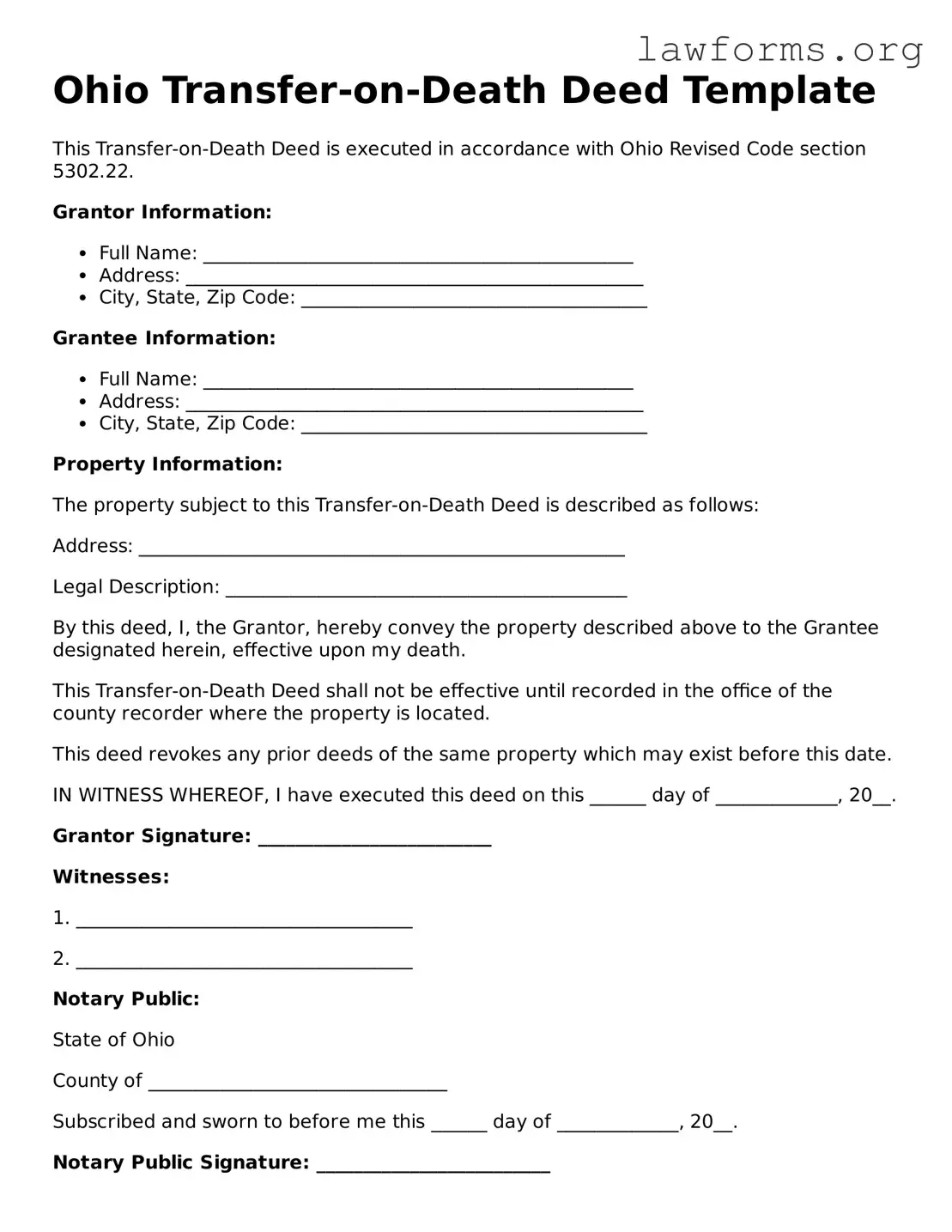Ohio Transfer-on-Death Deed Template
This Transfer-on-Death Deed is executed in accordance with Ohio Revised Code section 5302.22.
Grantor Information:
- Full Name: ______________________________________________
- Address: _________________________________________________
- City, State, Zip Code: _____________________________________
Grantee Information:
- Full Name: ______________________________________________
- Address: _________________________________________________
- City, State, Zip Code: _____________________________________
Property Information:
The property subject to this Transfer-on-Death Deed is described as follows:
Address: ____________________________________________________
Legal Description: ___________________________________________
By this deed, I, the Grantor, hereby convey the property described above to the Grantee designated herein, effective upon my death.
This Transfer-on-Death Deed shall not be effective until recorded in the office of the county recorder where the property is located.
This deed revokes any prior deeds of the same property which may exist before this date.
IN WITNESS WHEREOF, I have executed this deed on this ______ day of _____________, 20__.
Grantor Signature: _________________________
Witnesses:
1. ____________________________________
2. ____________________________________
Notary Public:
State of Ohio
County of ________________________________
Subscribed and sworn to before me this ______ day of _____________, 20__.
Notary Public Signature: _________________________
My Commission Expires: _________________________
